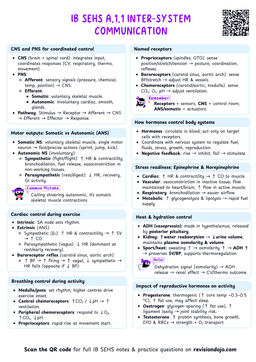Injury and Risk Factors
Injury risk
Injury risk is the probability of sustaining an injury based on the interaction of internal and external risk factors.
- Injury risk refers to the probability or likelihood of sustaining an injury during sports or physical activity.
- It depends on multiple factors, including the athlete’s physical condition, environment, and sport-specific demands.
- Not all injuries result from high-risk activities.
- Even low-impact exercises can cause injuries if proper technique, training, or equipment is neglected.
A soccer player performing a high-impact landing without proper technique has a higher risk of ACL injury than a player using the correct mechanics.
Magnitude of Risk
Magnitude of risk
The magnitude of risk is a concept used to quantify the likelihood and severity of an injury occurring.
- The risk of injury is not just about how likely it is to happen.
- It also depends on how severe the injury could be.
- The magnitude of injury risk depends on two key factors:
- Likelihood of risk: How often an injury is expected to occur
- Severity of risk: The level of damage or impact an injury may cause
The magnitude of risk is determined using the following equation:
$$\text{Magnitude of risk} = \text{Likelihood of risk} \times \text{Severity of risk}$$
Likelihood of risk
The probability or chance that an injury will occur during a specific activity or event.
Severity of risk
The potential seriousness or consequences of the injury. This refers to how severe the injury could be if it occurs (e.g., minor sprain vs. severe fracture).
- Think of likelihood as how often an event might happen, and severity as how bad the outcome will be if it happens.
- For instance, a fall (high likelihood) on a soft surface (low severity) versus a fall (high likelihood) on a hard surface (high severity).
Internal Factors Affecting Injury Risk (Internal Risk Factors)
Risk factors
Conditions or circumstances that can increase the likelihood of an individual developing an injury or condition.
Internal risk factors
Internal risk factors refer to variables inherent to the individual that can affect their susceptibility to injury.
Each person brings their own unique set of internal risk factors that can influence their susceptibility to injury:
- Age: Affects tissue strength, healing capacity, and recovery time
- Sex differences: Impact biomechanics, hormone levels, and injury patterns
- Pregnancy: Changes body mechanics and joint laxity
- Training effects: Influences muscle strength, flexibility, and technique
- Congenital factors: Natural variations in anatomy and physiology
- Previous injury history: Creates potential weak points and compensation patterns
A female athlete who previously tore her ACL may have multiple interacting internal risk factors: her sex (females have higher ACL injury rates), her previous injury, and any training adaptations she's developed in response.
1. Age
ExampleThink about a 40-year-old recreational runner versus a 15-year-old track athlete. While the teenager's body is still developing and adaptable, the adult might take longer to recover from intense training. But here's the twist - the teenager might be more vulnerable to growth-related injuries!
As individuals age, several physiological changes occur that increase their susceptibility to injury:
Muscles
- Loss of muscle mass: With age, there is a gradual loss of muscle mass, a condition called sarcopenia. This results in weaker muscles that are less capable of absorbing shock and providing stability during movement.
- Reduced muscle elasticity: Muscles become less elastic, leading to a higher likelihood of strains, sprains, and tears.
- Decreased strength and endurance: Aging muscles may not generate the same amount of force or sustain activity as effectively, which can contribute to fatigue and strain.
Bones
- Decreased bone density: As individuals age, bones become less dense and more brittle due to a reduction in bone mineral density. This increases the risk of fractures, particularly in the elderly.
- Osteoporosis: A common condition in older adults, osteoporosis causes bones to become fragile, further increasing the risk of fractures, especially from falls.
Joints and Cartilage
- Loss of joint flexibility: The cartilage in joints gradually degenerates with age, leading to less joint mobility and flexibility. This can result in an increased risk of joint injuries, such as sprains and strains.
- Arthritis: Joint conditions like osteoarthritis are more common in older athletes, which can make movements painful and lead to more severe injuries over time.
- Older athletes may not be able to recover from injuries as quickly due to the reduced regenerative capacity of tissues.
- Hence, a slower rate of healing increases the time spent away from physical activity.
Injury Susceptibility in Children vs. Adults vs. Elderly Athletes
Children:
- Children's bones are still growing, and their growth plates (epiphyseal plates) are more vulnerable to injury.
- Injuries like growth plate fractures are common in children.
- Children may lack the coordination and strength of adults, increasing their risk of muscle strains and sprains.
A young gymnast may have a higher risk of growth plate injuries if excessive or improper training is applied.
Adults:
- In adulthood, the body is typically in its peak physical condition, with strong muscles, bones, and ligaments.
- However, overuse injuries can occur due to intense training and competition.
- Adults are also more prone to injuries like muscle strains, ligament sprains, and joint dislocations, especially as they age into their 30s and 40s.
A marathon runner may face stress fractures due to the repeated impact on the bones.
Elderly Athletes:
- As athletes age, they may have diminished strength, flexibility, and bone density, making them more vulnerable to fractures and joint injuries.
- Older athletes may have a slower recovery rate, meaning that injuries can take longer to heal, and they may be more susceptible to chronic conditions like arthritis.
An elderly tennis player may experience joint instability in the shoulder or knee, leading to strains or tears.


